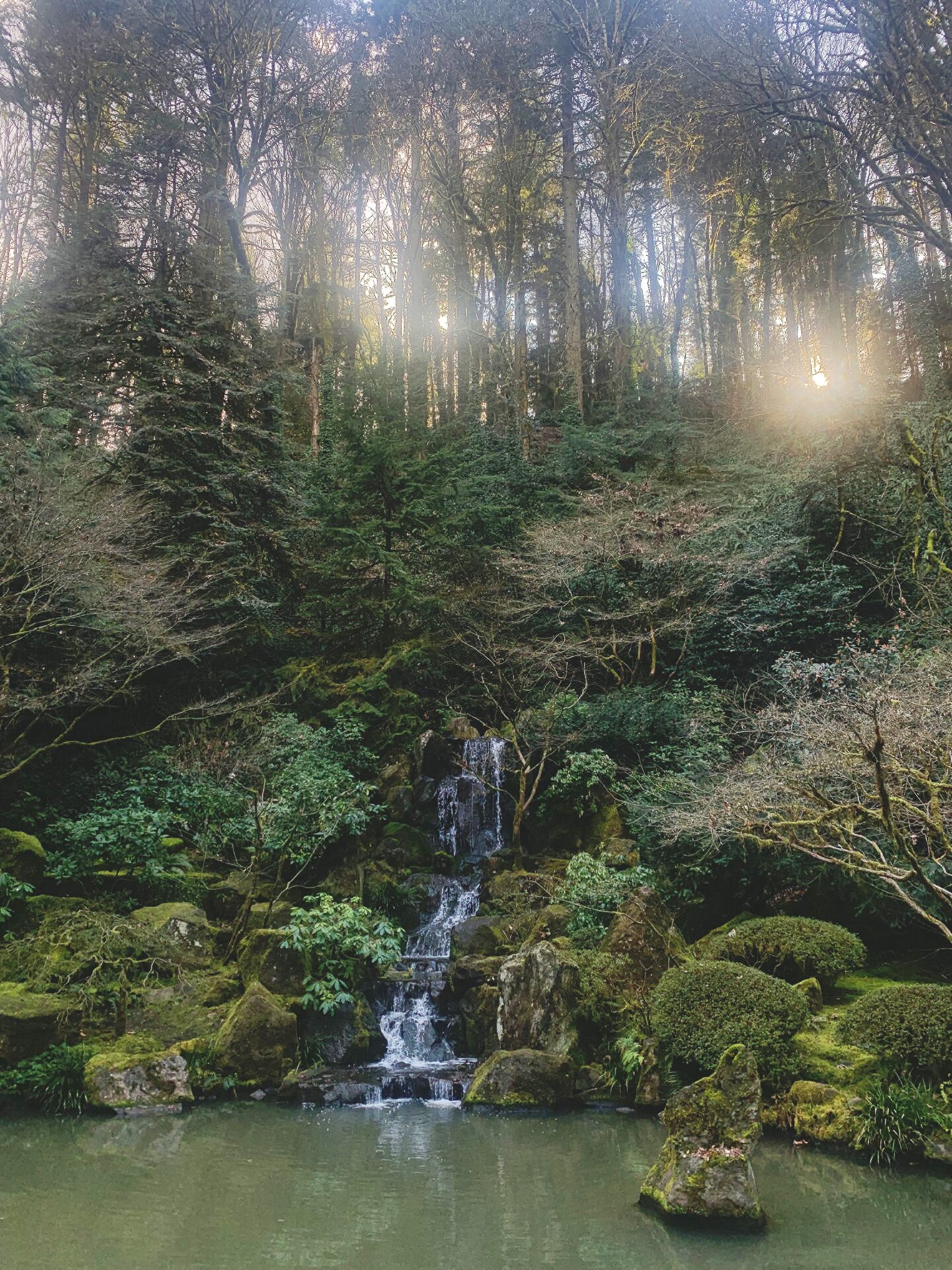
From the street, the Portland Japanese Garden appears smaller than it is. Tucked into the hills of west Portland’s Washington Park, across the street from the famed and sprawling International Rose Test Garden, the entrance is unassuming. A low, flat- roofed building, reminiscent of a modern take on traditional Japanese architecture, sits next to a placid pond, with a small garden of bushes and winding paths extending up the hill behind it. It is hard to imagine that this is the place Nobuo Matsunaga, Japanese ambassador to the United States from 1985-1989, once called “the most beautiful and authentic Japanese garden in the world outside Japan.”
Entering the Japanese Garden, however, reveals a hidden wonderland. The 12-acre garden is nestled in a natural hollow in the hills, with ivy-coated slopes rising sharply on nearly all sides. Within the garden, it is easy to forget you are in a major city. Different parts of the garden are devoted to different types of landscape. Such sites include piles of stones, groves of Japanese maple and cherry trees, trickling creeks, a koi pond with a waterfall pouring into it and even a large expanse of fine gravel for visitors to make designs in with a rake, a concept from Zen Buddhism known as kare sansui.
The purpose of a traditional Japanese garden is to serve as a microcosm of nature. Unlike most Western gardens, Japanese gardens rarely feature lawns, colorful flowers or much organization of what grows where. Instead, Japanese gardens take on a more naturalistic aesthetic, with large stones, dottings of trees and almost always a pond or creek. In ancient Japan, royals had gardens representing places from Shinto mythology with a pond symbolizing an ocean and a rock representing a mountain. From this came the idea that Japanese gardens should represent a miniature world unto themselves, with a variety of landscapes and imitations of natural features. Like many Japanese gardens, the Portland Japanese Garden also includes a variety of footbridges such as arched “half-moon” bridges and zigzag bridges across ponds.
Portland’s Japanese Garden uses two key principles common to many large Japanese gardens: miegakure and shakkei. Miegakure means “hide and reveal,” and it refers to a design feature very prominent in the Portland Japanese Garden: Not all of the garden can be seen at once. The visitor must follow the garden’s winding paths in order to discover new areas and landscapes, which are not visible from elsewhere. Shakkei means “borrowed scenery,” referring to scenic views from outside the garden. While most of the garden is encircled by steep hills, obscuring outside scenery, the garden pavilion, like the Lewis & Clark campus, is designed to face Mount Hood, visible through a notch in the hills. In the context of the Japanese garden, Hood resembles the iconic Japanese image of Mount Fuji.
The Portland Japanese Garden was planned and constructed throughout the 1960s and opened in 1967, on the former site of the Portland Zoo. It was intended as an homage to Portland’s sister city of Sapporo, Japan, and the city donated a hundred-year-old pagoda lantern to the garden. In 2017, the garden was expanded, adding features like a bonsai garden and a 185-foot-long stone wall built by a 15th-generation traditional Japanese stonemason.
The grounds include a café, which regularly hosts Japanese tea ceremonies, and a gallery, currently home to an exhibition on netsuke carvings, tiny sculptures traditionally worn as button fasteners. The exhibit runs through April 17. Other events at the Portland Japanese Garden include traditional music concerts and demonstrations of various Japanese art forms. For instance, on April 9, the Japanese classical music duo Maido Mind will perform a shinobue flute and piano concert at the garden.
The Portland Japanese Garden is accessible by public transit via a shuttle bus from the Washington Park MAX Light Rail stop. It is open every day of the week but Tuesday. The garden is a non-profit that receives no funding from the city or state, so adult admission to the garden costs $18.75, though there is a $15.25 student rate. However, it is just a small price for the privilege of visiting one of the world’s most authentic Japanese gardens.
Subscribe to the Mossy Log Newsletter
Stay up to date with the goings-on at Lewis & Clark! Get the top stories or your favorite section delivered to your inbox whenever we release a new issue.

Leave a Reply